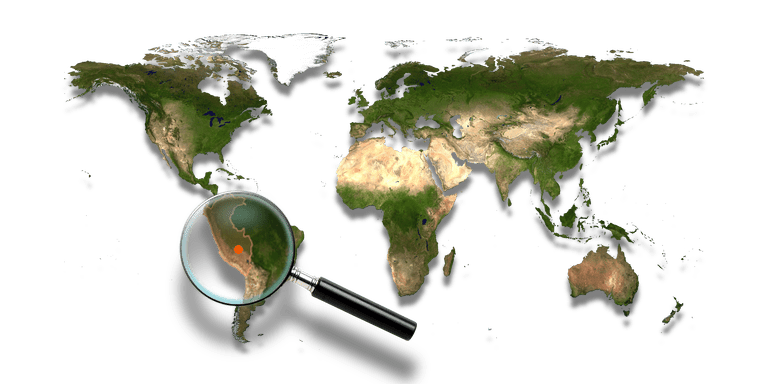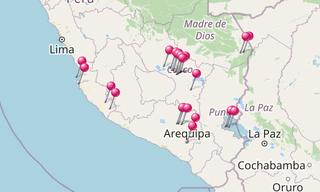Located 40 km from Cusco, the town of Maras in the Urubamba Valley (Sacred Valley of the Incas) is known for its local salt mines. Since pre-Inca times, salt has been obtained in Maras by evaporating salty water.
Salt ponds of Maras (Salinas de Maras)
Since pre-Inca times, salt has been obtained in Maras by evaporating salty water from a local subterranean stream. The highly salty water emerges at a spring, a natural outlet of the underground stream. The flow is directed into an intricate system of tiny channels constructed so that the water runs gradually down onto the several hundred ancient terraced ponds.
Almost all the ponds are less than four meters square in area, and none exceeds thirty centimeters in depth. All are necessarily shaped into polygons with the flow of water carefully controlled and monitored by the workers. As water evaporates from the sun-warmed ponds, the water becomes supersaturated and salt precipitates as various size crystals onto the inner surfaces of a pond’s earthen walls and on the pond’s earthen floor.
The pond’s keeper then closes the water-feeder notch and allows the pond to go dry. Within a few days the water has evaporated and salt remains. This process is repeated for about a month building up salt over time. Once enough salt has built up the keeper carefully scrapes the dry salt from the sides and bottom in layers.
The first layer is typically pink or white and is the highest quality, it is used as kitchen (table) salt. The second layer is known as bulk salt and is a lower quality than the first layer, it is usually white. The third layer is typically brown and is used as industrial salt.
Moray (Circular Terraces)
Moray is an archaeological site in Peru approximately 50 km northwest of Cusco on a high plateau at about 3,500 m and just west of the village of Maras. The site contains unusual Inca ruins, mostly consisting of several terraced circular depressions, the largest of which is approximately 30 m deep. As with many other Inca sites, it also has an irrigation system.
This landmark is widely agreed to have been used for farming, and soil samples have shown that soils were brought in from different regions to be used in helping grow crops at the different levels of the terraces. The wide temperature differences in the terraces have created micro climates, similar to what is achieved in greenhouses in modern times, and is believed to have been used by the Incas to study the effects of different climatic conditions on crops.
Iglesia San Francisco de Asís de Maras
The church is located in the town of Maras, province of Urubamba. It was built in 1650 and restored almost three centuries later.

.hero.landscape.jpg?w=1600)


.jpg?w=256)
.jpg?w=256)
.jpg?w=256)
.jpg?w=256)
.jpg?w=256)
.jpg?w=256)
.jpg?w=256)
.jpg?w=256)
.jpg?w=256)
-Iglesia-de-San-Francisco.jpg?w=256)
-Incan-Terraces.jpg?w=256)
.jpg?w=256)
.jpg?w=256)
.jpg?w=256)
.jpg?w=256)
.jpg?w=256)
.hero.jpg?w=320)
